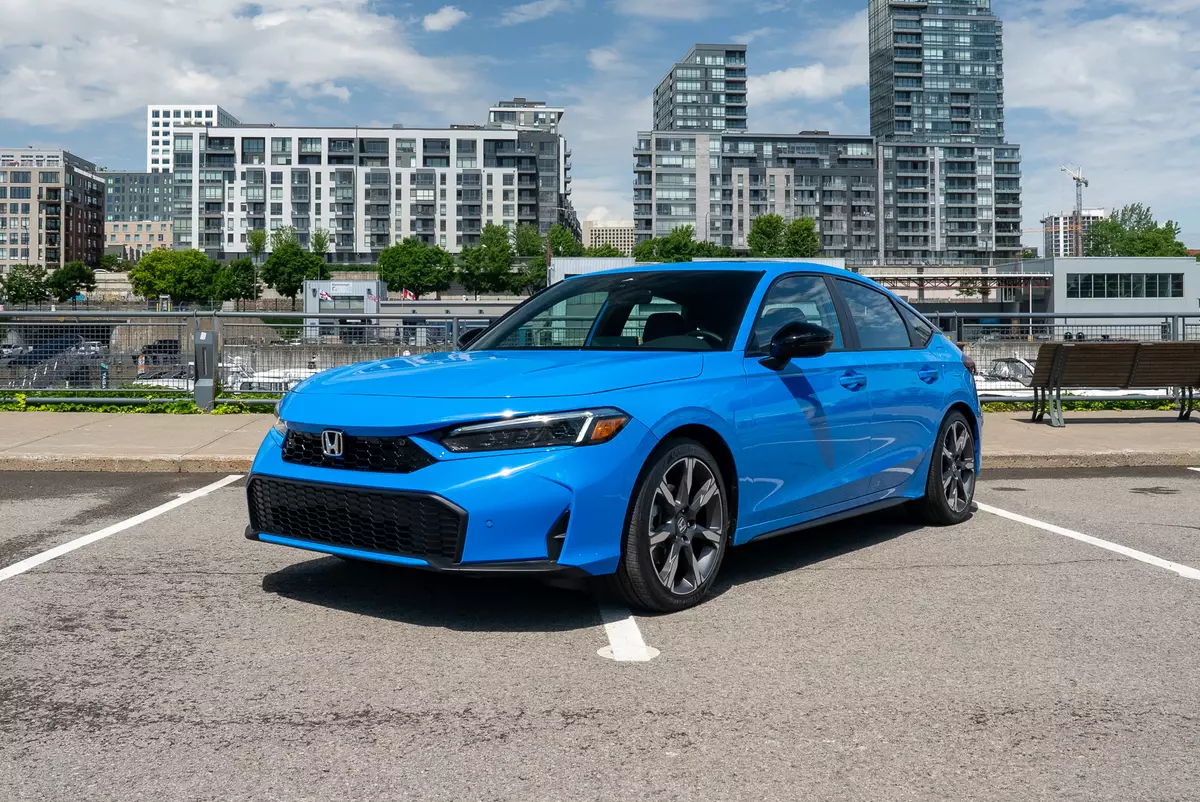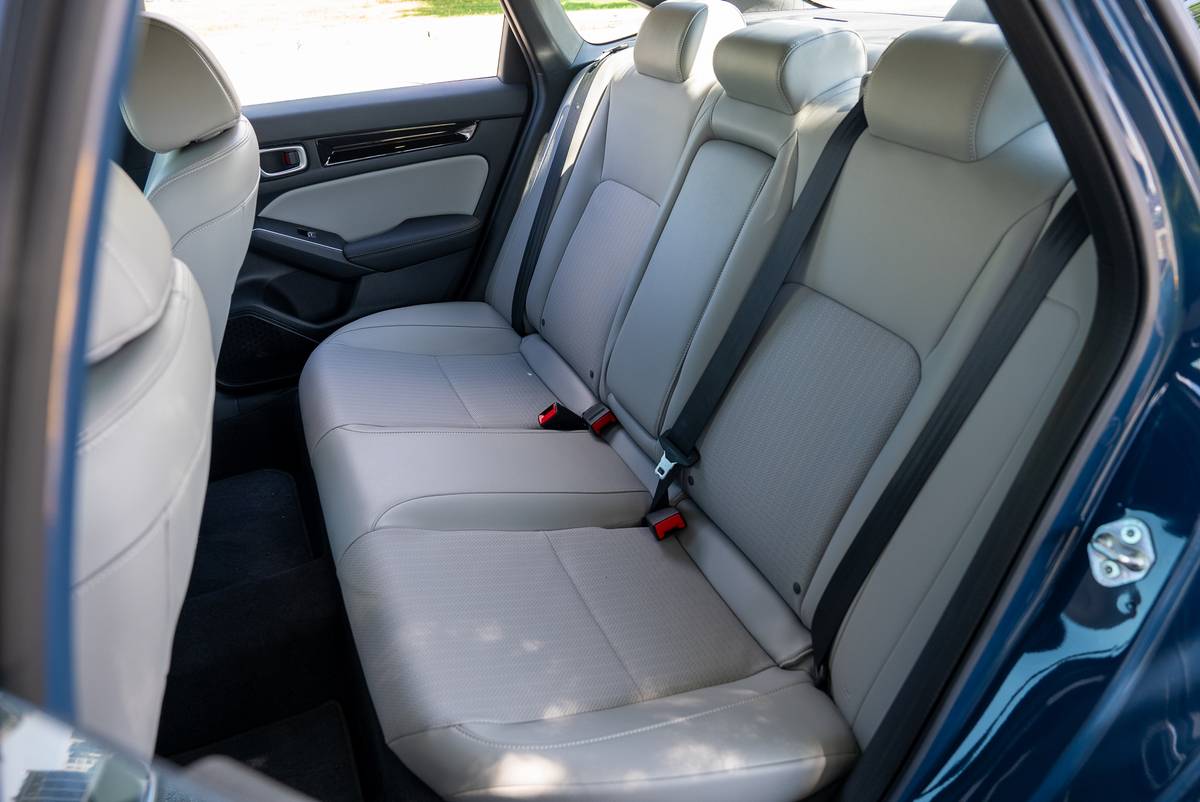Is the 2025 Honda Civic Hybrid a Good Car? 5 Pros, 3 Cons

The Honda Civic was already one of the best compact cars available, and a freshening for the 2025 model year made it better still. The update includes the return of a hybrid powertrain, which offers improved acceleration and fuel economy and replaces the 1.5-liter turbo four-cylinder as the Civic’s premium powertrain.
- ${price_badge()}
- ${battery_badge()}${ev_report_link()}
- ${hot_car_badge()}
- ${award_badge()}
- ${cpo_badge()}
${price_badge_description}
The EV Battery Rating is based on this vehicle's current expected range relative to the vehicles expected range when new. ${battery_badge_text}
Certified cars are manufacturer warrantied and typically go through a rigorous multi-point inspection.
This car is likely to sell soon based on the price, features, and condition.
${award_blurb}
${award_two_blurb}
Shop the 2025 Honda Civic Hybrid near you


It’s been about 10 years since the last hybrid Civic, leaving compact buyers no alternative to a growing list of competitors that includes hybrid versions of the Hyundai Elantra, Kia Niro and Toyota Corolla. The new Civic hybrid is a worthy addition to the lineup, combining more power than those rivals, a well-finished interior, and an excellent balance of ride comfort and agile handling.
Cars.com Senior Research Editor Damon Bell sampled a new Civic hybrid at a Honda media event and put it through its paces. (Per our ethics policy, Cars.com pays for its own airfare and lodging when attending such manufacturer-sponsored events.) Bell found the compact car to be a well-rounded choice, as well as a solid alternative to competing hybrids. Tap the link above for his expert review; for a quicker look, here are five things we like about the 2025 Honda Civic hybrid and three things we don’t.
Things We Like

1. More Grunt
Opting for the hybrid gets you a version of the same hybrid system used in Honda’s CR-V and Accord hybrids; it uses a 2.0-liter four-cylinder gas engine and two electric motors. In the Civic, the hybrid powertrain is good for 200 horsepower and 232 pounds-feet of torque; that’s a 50-hp bump compared to the base 2.0-liter four-cylinder engine and 20 hp more than the 2024 model’s optional 1.5-liter four-cylinder. The Civic hybrid’s powertrain also easily outguns the competing Corolla, Elantra and Niro hybrids, all of which generate less than 140 hp.
2. Smooth Mover
With the instant response of electric assist and 200 hp on tap, the Civic hybrid delivers lively acceleration from a standstill, though flooring the pedal while underway can sometimes result in a brief hesitation. Transitioning from gas to electric power and back is smooth and seamless. A Linear Shift Control feature can mimic the sound and feel of a conventional automatic going through the gears.
3. Choose Your Mode
The Civic Hybrid’s brakes are smooth and easy to modulate, and a choice of four levels of regenerative braking lets the driver tailor response to their liking. That said, even the highest setting is not as aggressive as the systems found in some electric vehicles and plug-in hybrids, which can allow true one-pedal driving. But the system is easy to use and increases efficiency by helping charge the battery. There are also four driving modes to choose from: Econ, Normal, Sport and a custom Individual option.
4. Fun to Drive
Our mostly urban driving route did not include a lot of twisty two lanes, but the Civic hybrid delivered lively handling and tackled everything from highway on ramps to cobblestone streets with ease. Honda says an increase in body rigidity and revised suspension tuning for 2025 have upped the Civic’s handling game.
5. Comfortable Cabin
The Civic’s cabin has been a strong suit since its 2022 redesign, and it remains one of the more spacious and attractive interiors in the class; the freshening for 2025 left the Civic’s interior largely as is. There’s more than adequate room for average-sized adults front and rear, and rear-seat space is more generous than in most rivals. Our tested Sport Touring trim’s interior looked and felt suitably upscale, with plenty of soft-touch surfaces and attractive trim.
More From Cars.com:
- What Real-World MPG Does the 2025 Honda Civic Hybrid Get?
- What Are the Cheapest Hybrid Cars?
- What Are the Best Used Cars for $10,000?
- These Cars Do Well in Crash Tests for 2025, According to IIHS
- Find Your Next Car
Things We Don’t Like

1. Google Built-In
Lower trims get analog instrumentation and a 7-inch infotainment touchscreen, but the Sport Touring trim has a 10-inch digital instrument display and 9-inch infotainment touchscreen running Google Built-In software. We didn’t experience problems during our test drive, but the Google system has proven to be glitchy in the past. In addition, some of the system’s functions require a data connection, which is not always easy to find when you’re in the boonies or anywhere with spotty cell service.
2. Cost Cutting
As much as we like the Civic overall, even the top Sport Touring trim’s omission of features found on competing models is disappointing. For example, a 360-degree camera and ventilated front seats are not available, but both are offered on the Elantra’s Limited trim. Rear air vents are common with some rivals, too, but were also absent in the Sport Touring.
3. Premium Pricing
With the Civic hybrid, Honda has adopted the same marketing strategy used on the Accord and CR-V hybrids: positioning the hybrid as the top trim level with all the bells and whistles. That’s fine, but it does mean that increased fuel economy requires adding to the bottom line. A 2025 Civic Sport Touring hybrid sedan starts at $33,100 (all prices include destination), and the Sport hybrid trim starts at $30,100; the non-hybrid Sport starts at $27,400 and the LX at $25,400.
Related Video:
Cars.com’s Editorial department is your source for automotive news and reviews. In line with Cars.com’s long-standing ethics policy, editors and reviewers don’t accept gifts or free trips from automakers. The Editorial department is independent of Cars.com’s advertising, sales and sponsored content departments.
Featured stories




